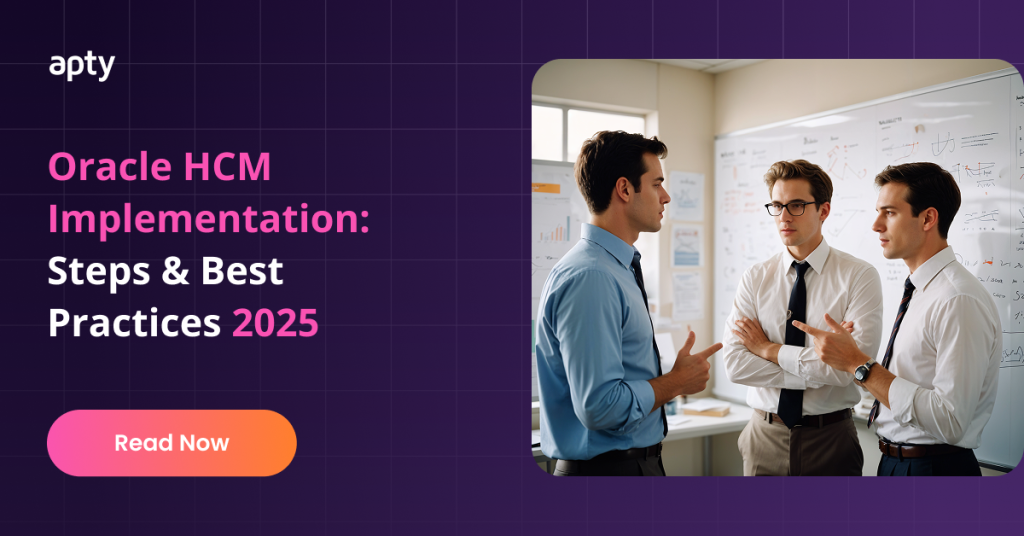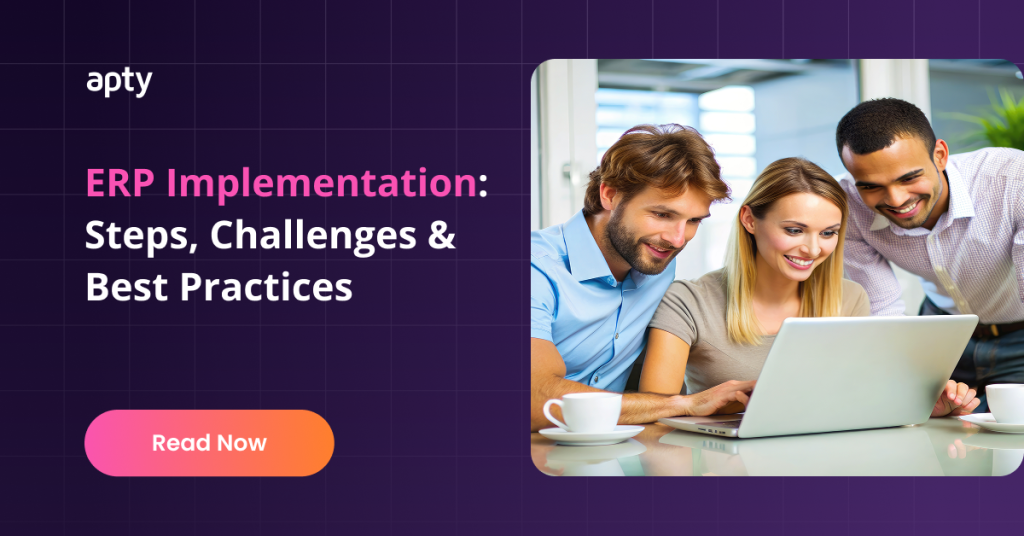As organizations navigate complexities, the strategic importance of calculating and enhancing the ROI of ERP implementation comes into sharp focus. With the ERP software market expected to reach $62.36 billion by 2028, growing at an annual rate of 4.78% from 2023 to 2028, understanding the return on this significant investment is more crucial than ever for companies investing in ERP systems. We highlight how optimizing ERP systems to impact the bottom line, especially by reducing operational costs.
The concept of ERP ROI goes beyond mere financial calculations. It encompasses a broader spectrum of operational and strategic benefits that ERP systems offer. The impacts are far-reaching, from streamlined processes to improved data accuracy and decision-making. However, the challenge lies in quantifying these benefits and understanding how they translate into tangible returns. This is where metrics like ERP ROI analysis and tools like ERP ROI calculators become indispensable for businesses seeking to justify their ERP investments.
Moreover, the evolving business technology demands a more nuanced approach to implementing and leveraging ERP systems. Whether it’s through reducing cycle times, enhancing resource allocation, or improving inventory management, the ROI of ERP implementation can be a game-changer for businesses. It’s not just about implementing technology but about doing it in a way that aligns with the organization’s strategic goals and operational needs. Let’s explore how businesses can achieve an optimal ROI from their ERP systems, focusing on strategies that reduce operating costs while enhancing overall efficiency and productivity.
Understanding the ROI of an ERP System
The ROI of ERP implementation includes both financial returns and indirect benefits enhancing organizational efficiency and effectiveness. The average spend per employee in the ERP Software market is projected to be $14.19, underlining companies’ substantial investment in these systems. Understanding this ROI is crucial to gauge the success and viability of ERP investments.

ERP ROI analysis comprehensively evaluates how the system affects various aspects of the business. This encompasses evaluating improvements in process efficiency, data accuracy, decision-making capabilities, and overall organizational agility. These improvements often lead to cost reductions and enhanced revenue opportunities, directly impacting the bottom line. Businesses often use ERP ROI calculators to accurately measure these benefits, which provide a more quantitative understanding of the system’s impact.
However, an ERP system’s influence extends beyond quantifiable metrics. Its strategic value in aligning organizational processes with business objectives is significant. It enables businesses to adapt swiftly to market changes and customer demands, which, while challenging to quantify, are crucial for long-term business success. This strategic alignment is fundamental in ensuring that the ERP system serves current operational needs and positions the company for future growth and adaptation.
Learn More: ERP Implementation Checklist: Planning for an Enterprise Implementation
Calculating ERP ROI
Calculating the ROI of an ERP implementation is essential in evaluating its effectiveness and justifying the investment. This includes assessing immediate financial returns and the broader impact on operations and efficiency. Notably, the average ROI for an ERP project is 52%, meaning for every $1 invested in an ERP system, there’s an average return of $1.52. The calculation process involves identifying all costs, quantifying benefits, considering both short-term and long-term gains, and utilizing ERP ROI calculators for a comprehensive analysis.
Firstly, it’s essential to identify all associated costs of the ERP system. This includes the upfront costs like software purchase and hardware acquisition and ongoing expenses such as maintenance, support, and training. These figures form the investment baseline against which returns will be measured.

Secondly, the ERP system’s benefits must be quantified. This can be challenging, as benefits often extend beyond direct financial savings. Improved process efficiencies, time savings, error reductions, and better decision-making capabilities are some areas where ERP systems add value. Quantifying these benefits in monetary terms requires a thorough understanding of operational processes and how they translate into cost savings or revenue generation.
Additionally, businesses should consider both short-term and long-term benefits. While some advantages, like improved workflow efficiency, may be immediate, others, such as increased customer satisfaction or market share growth, may take longer to materialize but are equally important for the overall ROI calculation.
The formula for ERP ROI is typically calculated as follows:
ERP ROI=(Total Benefits – Total CostsTotal Costs)×100ERP ROI=(Total CostsTotal Benefits – Total Costs)×100
Finally, businesses can utilize ERP ROI calculators, which factor in these various costs and benefits to provide a more comprehensive ROI figure. These tools often include options to input specific data relevant to the business, allowing for a tailored and accurate ROI assessment.
Following these steps, businesses can gain a clear and objective view of the ROI of their ERP implementation, enabling them to make informed decisions about future investments in their ERP systems.
Delve More: ERP Adoption – 5 Lethal Mistakes to Avoid in the Post-Pandemic World
Determining the Benefits of ERP
ERP implementation offers benefits beyond financial gains. Reinforcing these advantages, 93% of organizations report their ERP projects as successful, indicating a high rate of positive outcomes from these investments. This high success rate highlights the substantial impact of ERP systems on a business’s operational and strategic performance. Understanding these benefits is crucial for any organization considering or evaluating an ERP system.
Operational Efficiency: One of the primary advantages of an ERP system is the remarkable improvement in operational efficiency. ERP systems reduce manual labor and minimize errors by automating and streamlining business processes. This efficiency is not just in terms of time saved but also in the optimal use of resources, leading to significant cost savings.
Improved Decision-Making: ERP systems provide a unified, real-time view of business data, enabling better decision-making. With accurate and timely data, management can make informed decisions, foresee business trends, and strategize effectively. This improved decision-making capability can lead to better business outcomes and increased profitability.
Enhanced Data Accuracy and Reporting: ERP systems consolidate data from various business functions, ensuring consistency and accuracy. Data reliability enhances reporting quality, which is vital for compliance, forecasting, and strategic planning.

Cost Reduction: A direct benefit of ERP implementation is cost reduction. Businesses can significantly lower their operating costs by optimizing operations and improving efficiency. This includes reductions in inventory, procurement, and even HR-related expenses.
Increased Customer Satisfaction: ERP systems can significantly enhance customer satisfaction by streamlining processes like order fulfillment, inventory management, and customer service. A satisfied customer base often translates into repeat business and positive word-of-mouth, which are invaluable for any business.
Scalability and Growth: ERP systems are designed to grow with your business. They provide the scalability needed to accommodate growth, whether in terms of increased transaction volumes, new business processes, or geographic expansion.
Competitive Advantage: An efficient ERP system can be a significant differentiator in today’s competitive world. It enables businesses to respond quickly to market changes, manage operations effectively, and maintain a competitive edge.
Let’s explore tips to increase the ROI of an ERP system, focusing on how strategic planning, system selection, implementation, and continuous improvement can contribute to maximizing ROI.
Read More: ERP Implementation Plan: 10 Key Phases & Best Practices
8 Tips to Increase the ROI of an ERP System
Strategic Planning and Goal Setting
- Aligning the ERP system with business objectives is critical. Clearly defined goals help measure the ERP implementation’s success and contribution to the organization’s strategic vision.
- Setting measurable and realistic goals for the ERP system ensures that every functionality and process aims to achieve specific outcomes.
Choosing the Right ERP Solution
- Selecting an ERP solution that aligns with the business’s unique needs is vital. The right system should fit the current business processes and be scalable for future growth.
- When choosing an ERP system, consider factors like industry-specific features, user-friendliness, and integration capabilities.
Effective Implementation and Integration
- A well-planned and executed implementation is key to maximizing ROI. This includes careful planning, resource allocation, and stakeholder engagement throughout the implementation process.
- Ensuring seamless integration with existing systems and processes reduces disruptions and enhances system effectiveness.
User Training and Support
- Comprehensive training for end-users is essential to ensure they are comfortable and proficient with the new system. This increases user adoption and maximizes the ERP system’s potential.
- Continuous support and access to help resources post-implementation help in resolving issues quickly and maintaining system efficiency.
Data Management and Quality Control
- Accurate and consistent data is the foundation of any ERP system. Implementing standards for data entry and ongoing quality checks can significantly improve information reliability.
- Regular audits and data cleansing activities ensure the ERP system continues to provide valuable and accurate insights.
Continuous Improvement and Adaptation
- Regular assessment of the ERP system’s performance helps identify improvement areas. Being receptive to user feedback and adapting to changing business needs keeps the system relevant and effective.
- Staying updated with the latest ERP trends and technologies can provide further optimization and ROI enhancement opportunities.
Measuring and Analyzing Performance Post-Implementation
- Utilizing built-in analytics tools and performance metrics allows continuous monitoring of how the ERP system contributes to business goals.
- Regularly reviewing these metrics and making data-driven decisions can lead to ongoing improvements in the ERP system’s performance and ROI.
Using Digital Adoption Platforms (DAPs)
Integrating Digital Adoption Platforms (DAPs) with ERP systems significantly advances how businesses optimize their software investments. DAPs play a crucial role in enhancing the effectiveness and usability of ERP systems, addressing several key challenges that organizations often face post-implementation.
User Experience Enhancement: DAPs are designed to simplify complex ERP interfaces, making them more intuitive and user-friendly. This enhancement in user experience is crucial, especially when dealing with sophisticated ERP software that can often overwhelm users. By providing a more accessible interface, DAPs help reduce the learning curve and increase overall user satisfaction.
On-Demand Training and Support: One of the standout features of DAPs is their ability to offer real-time, context-sensitive guidance. This on-the-fly support can be a game-changer, particularly for new users or when rolling out new features within the ERP system. Instead of relying on traditional, often time-consuming training methods, DAPs provide immediate assistance within the application, leading to a more efficient learning process.
Maximizing ERP Utilization: A common issue with ERP implementations is the underutilization of the system’s capabilities. DAPs help bridge this gap by guiding users through the full range of functionalities, ensuring that the ERP system is used to its fullest potential. This improves operational efficiency and ensures that the organization gets the maximum return on its ERP investment.
Analytics and Feedback for Continuous Improvement: Many DAPs have analytics tools that track user interactions with the ERP system. This data is invaluable in understanding how the system is used, identifying areas where users struggle, and providing insights into potential improvements or additional training needs.
Reducing Resistance to Change: Implementing a new ERP system or upgrading an existing one can often be met with resistance from users accustomed to a particular way of working. DAPs can ease this transition by providing a supportive and interactive environment, helping users to adapt to the new system more comfortably and efficiently.
Cost-Effective Training and Support: Traditional training programs can be costly and logistically challenging. DAPs offer a more cost-effective solution by reducing the need for extensive in-person training sessions. This cuts down on training costs and minimizes disruption to daily operations.
Read More: Navigating ERP Adoption Complexities: The Transformative Power of Digital Adoption Platforms
Role of Apty in ERP systems
The journey to maximizing the ROI of an ERP system is multifaceted, encompassing strategic planning, careful selection, effective implementation, and ongoing management and adaptation. With about 64% of companies planning to implement ERP within the next three years, the significance of these systems in the business landscape continues to grow. Each of the eight tips outlined offers a pathway to enhance the efficiency and effectiveness of ERP systems, directly contributing to an improved bottom line.
Organizations can significantly enhance their operational efficiency by aligning ERP systems with business objectives, selecting the right solutions, executing well-planned implementations, and ensuring continuous user support and data quality. Furthermore, adopting Digital Adoption Platforms (DAPs) like Apty catalyzes ERP utilization, offering an innovative approach to user training, system adoption, and continuous improvement.
Ultimately, the effective utilization of an ERP system is a continuous process that requires regular assessment and adaptation. By staying attuned to the evolving business needs and technology trends, organizations can ensure their ERP systems meet current requirements and are geared for future challenges and opportunities.
This comprehensive ERP implementation and management approach, underpinned by a clear understanding of its ROI, is instrumental in achieving long-term business success and sustainability.
Table of Contents
- Understanding the ROI of an ERP System
- Calculating ERP ROI
- ERP ROI=(Total Benefits – Total CostsTotal Costs)×100ERP ROI=(Total CostsTotal Benefits – Total Costs)×100
- Determining the Benefits of ERP
- 8 Tips to Increase the ROI of an ERP System
- Strategic Planning and Goal Setting
- Choosing the Right ERP Solution
- Effective Implementation and Integration
- User Training and Support
- Data Management and Quality Control
- Continuous Improvement and Adaptation
- Measuring and Analyzing Performance Post-Implementation
- Using Digital Adoption Platforms (DAPs)
- Role of Apty in ERP systems
- Optimize your ERP System with Apty
- Oracle HCM Implementation: Steps & Best Practices 2025
- ERP Implementation: Steps, Challenges & Best Practices
- 9 Change Management Strategies for Smooth Transitions






